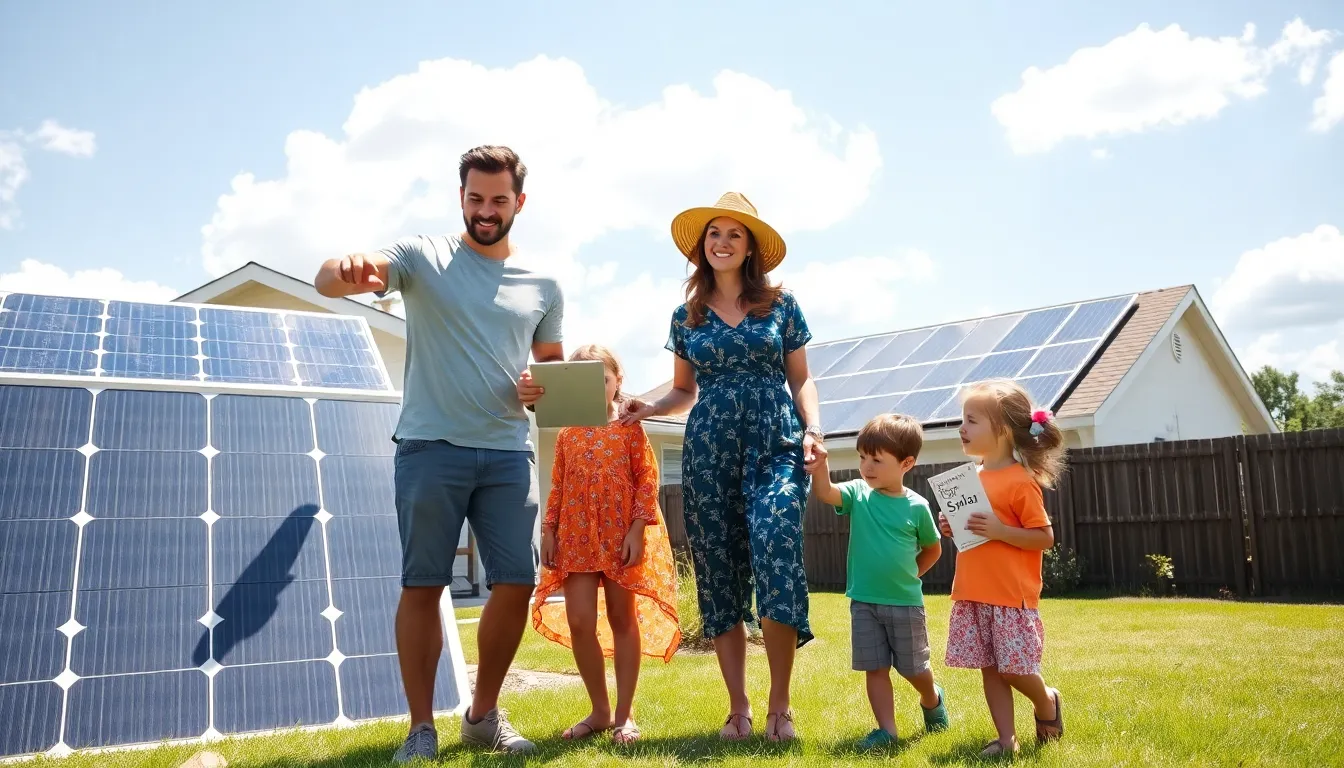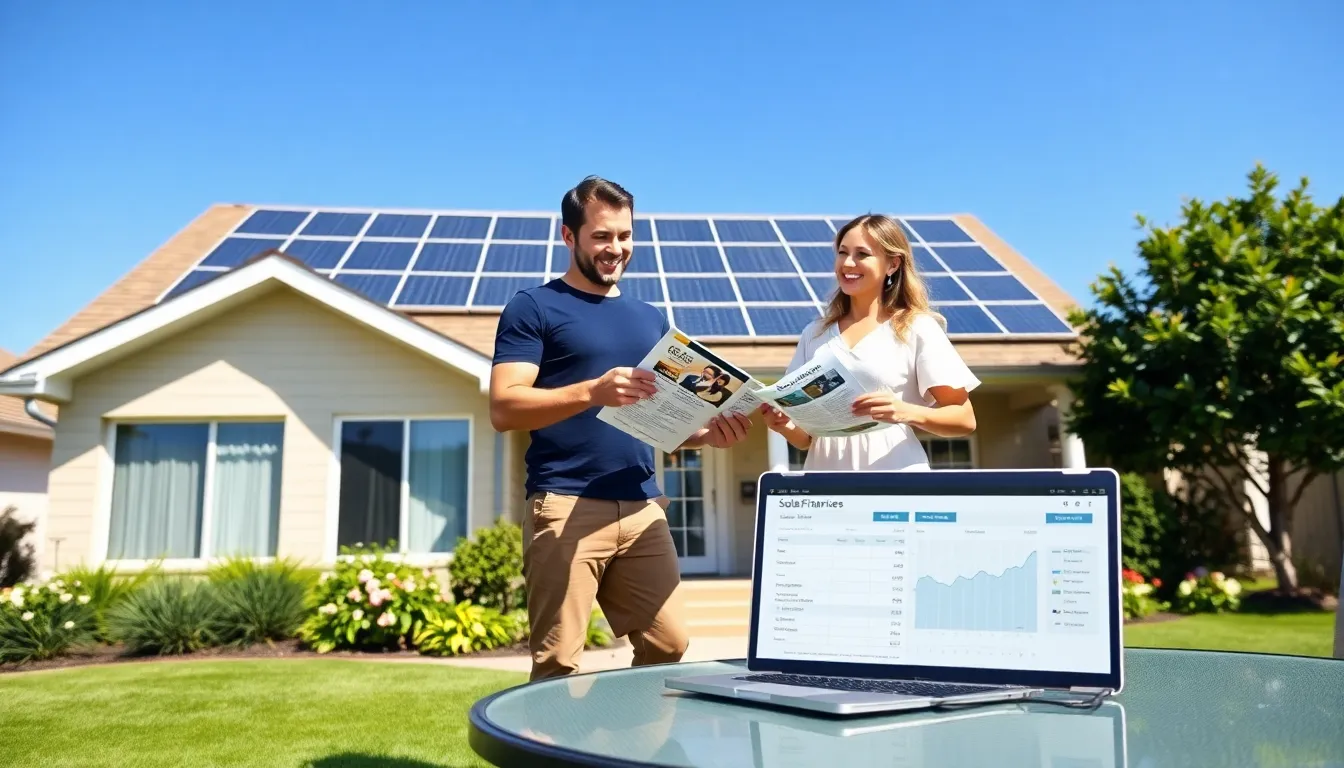Table of Contents
ToggleIn an era where energy efficiency meets environmental responsibility, solar power has emerged as a transformative solution for homeowners. “Lots of Power Files: Finance Solar Home Ebook” is designed to empower individuals looking to invest in solar energy for their homes. This comprehensive guide will investigate into the various financing options available, highlights the benefits of solar energy, and assists you in making informed decisions about your solar investment. Whether you’re a first-time buyer or looking to upgrade your existing system, understanding the intricacies of solar financing is key to maximizing your investment.
Understanding Solar Financing Options

Solar financing can seem daunting at first: but, grasping the basic options available can simplify the process significantly. Homeowners looking to use solar energy need to familiarize themselves with several financing avenues. These include cash purchases, solar loans, and leases.
- Cash Purchases: Paying outright for a solar system allows homeowners to capitalize on immediate savings from reduced electricity bills while also taking advantage of available incentives.
- Solar Loans: Home or personal loans designed specifically for solar installations can enable homeowners to pay over time while still receiving the savings sooner than they would with a lease.
- Leasing: This option allows homeowners to maintain lower upfront costs by leasing a system from a provider, which takes care of installation and maintenance. Although the return on investment may be lower than purchasing a system outright, this route offers immediate benefits without the initial financial burden.
Each option presents its own set of advantages and considerations, which are essential to evaluate before proceeding.
Benefits of Solar Energy for Homeowners
Solar energy comes with an array of benefits that make it an attractive option for homeowners. Here are some of the most compelling reasons:
Key Components of a Solar Home System
A typical solar energy system comprises solar panels, inverters, and a battery storage system (if applicable). Together, these components work harmoniously to convert sunlight into energy, which can significantly reduce electricity costs.
Choosing the Right Solar Panels
When selecting solar panels, homeowners should consider efficiency ratings, brand reputation, warranties, and cost. Higher efficiency panels may come at a premium but can lead to greater savings on electricity bills in the long run.
Inverters and Batteries Explained
Inverters play a crucial role in converting the direct current (DC) generated by solar panels to alternating current (AC) used in homes. Battery systems, while an added expense, can enhance energy independence by storing surplus energy generated for use during cloudy days or power outages. This can further the long-term savings and reliability of a solar setup.
Government Incentives and Rebates
To encourage the adoption of solar energy, various government incentives and rebates are available across federal, state, and local levels. The federal solar tax credit (ITC) allows homeowners to deduct a significant percentage of the cost of their solar system from their federal taxes. This can considerably lower the overall cost of installation.
Also, many states offer their own incentives, such as performance-based incentives or rebates for residential solar installations. Homeowners are encouraged to research local programs to uncover potential savings that can enhance the financial feasibility of solar investments.
Financing Your Solar Installation
Financing options play a crucial role in the decision-making process for homeowners. Adequate planning can lead to significant long-term savings.
Types of Solar Loans
Solar loans can vary by lender and product type, with options such as secured loans against existing home equity, unsecured personal loans, or specialized solar loans that may offer competitive interest rates and terms suited specifically for solar installations.
Leasing vs. Purchasing Solar Panels
When weighing leasing against purchasing, homeowners should consider the total cost of ownership, the advantages of tax incentives, and potential savings over time. While leasing may appear attractive due to lower upfront costs, owning the system often leads to greater overall savings and control over the installation.
Evaluating Your Return on Investment
When adopting solar energy, assessing the return on investment (ROI) is vital to understand the financial benefits clearly. Homeowners can evaluate their ROI by examining:
- Payback Period: This is how long it takes to recoup initial investment through energy savings. A typical payback period may range from 5 to 10 years, depending on local energy costs and incentives.
- Increased Home Value: Numerous studies indicate that homes with solar energy systems tend to sell for more than those without. This can be factored into the ROI calculation.
Many homeowners find that the total long-term savings on energy bills, combined with the added value at resale, makes solar energy a smart investment.
Maintaining Your Solar Energy System
Once a solar energy system is installed, ongoing maintenance is minimal but essential for optimal functionality. Homeowners should regularly clean the solar panels to ensure maximum sunlight absorption and schedule periodic inspections to address any potential issues proactively. Keeping the system in good working order can contribute significantly to overall energy efficiency, eventually enhancing the return on investment.
Conclusion
The journey to harnessing solar energy for home use can be astonishingly rewarding both financially and environmentally. With numerous financing options available, coupled with substantial government incentives, homeowners stand to gain significantly from investing in solar energy. By leveraging the insights gathered from this guide, individuals can make well-informed decisions and enjoy the long-term benefits of solar energy in their homes. “Lots of Power Files: Finance Solar Home Ebook” serves as a valuable resource in navigating the solar landscape, transforming how homeowners think about energy consumption.






